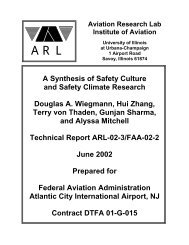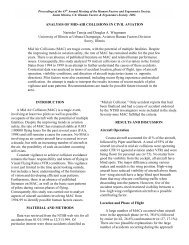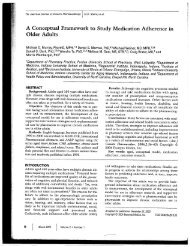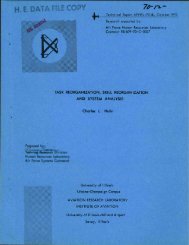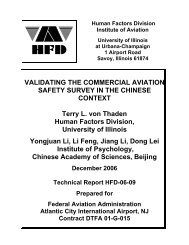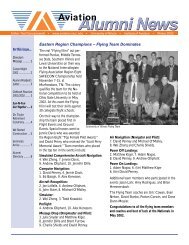Defining and Assessing Safety Culture in High Reliability Systems
Defining and Assessing Safety Culture in High Reliability Systems
Defining and Assessing Safety Culture in High Reliability Systems
You also want an ePaper? Increase the reach of your titles
YUMPU automatically turns print PDFs into web optimized ePapers that Google loves.
Thacker, J. (1994). Organizational cultures: How to identify <strong>and</strong> underst<strong>and</strong> them.<br />
Educational <strong>and</strong> Child Psychology, 11(3), 11-21.<br />
The author explores the mean<strong>in</strong>g of organizational culture as it applies to education, specifically,<br />
guid<strong>in</strong>g beliefs <strong>and</strong> expectations <strong>in</strong> operations particularly how people relate or fail to relate to<br />
each other. <strong>Culture</strong> resides ma<strong>in</strong>ly <strong>in</strong> the taken for granted. One way to access a culture is to<br />
study its symbols through such means as language, paperwork (or lack thereof), relationships.<br />
<strong>Culture</strong> is seen as composed of different <strong>in</strong>teract<strong>in</strong>g layers (based on Sche<strong>in</strong>, 1985):<br />
(1) Artifacts <strong>and</strong> creations which are visible but often at the level of espoused theories (outward<br />
manifestations, high profile symbols),<br />
(2) Values shown through behavior which have some awareness, but at the level of theories <strong>in</strong><br />
action (rout<strong>in</strong>e responses, values, norms),<br />
(3) M<strong>in</strong>d sets – basic assumptions which are taken for granted <strong>and</strong> largely <strong>in</strong>visible, though they<br />
can be articulated (nature of reality, time , space, relationships), <strong>and</strong><br />
(4) Heart sets which are mostly unconscious (emotional states <strong>and</strong> needs).<br />
<strong>Culture</strong>s are also likened to Greek gods (based on the work of Charles H<strong>and</strong>y, 1991), such as<br />
Zeus (a spider web) a patriarchal culture where the key to the organization sits <strong>in</strong> the center, or<br />
Dionysius (a constellation of stars loosely gathered <strong>in</strong> a circle) where people describe themselves<br />
as doctors or lawyers, rather than where they work. The dual nature of culture is discussed as<br />
simultaneously be<strong>in</strong>g a force for stability <strong>and</strong> an impediment to change. However, when<br />
managed properly, culture can be a force for change. Thacker discusses the process of “surfac<strong>in</strong>g<br />
the culture” by facilitat<strong>in</strong>g a series of cycles of group activity through <strong>in</strong>troduc<strong>in</strong>g ideas of<br />
organizational culture, generat<strong>in</strong>g data on the culture, mak<strong>in</strong>g sense of the data <strong>and</strong> identify<strong>in</strong>g<br />
key themes, <strong>and</strong> plann<strong>in</strong>g further data collection. Thacker then outl<strong>in</strong>es what he calls a three way<br />
analysis to help groups want<strong>in</strong>g to move toward change:<br />
(1) Re-affirm <strong>and</strong> safeguard core values<br />
(2) Discard no longer relevant practices<br />
(3) Create a w<strong>in</strong>dow of opportunity for change. Exp<strong>and</strong> the range of possibilities by<br />
bra<strong>in</strong>storm<strong>in</strong>g or other ideas-produc<strong>in</strong>g methods.<br />
40





